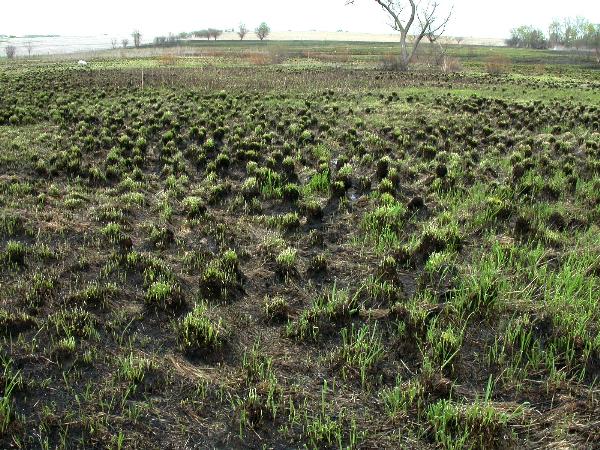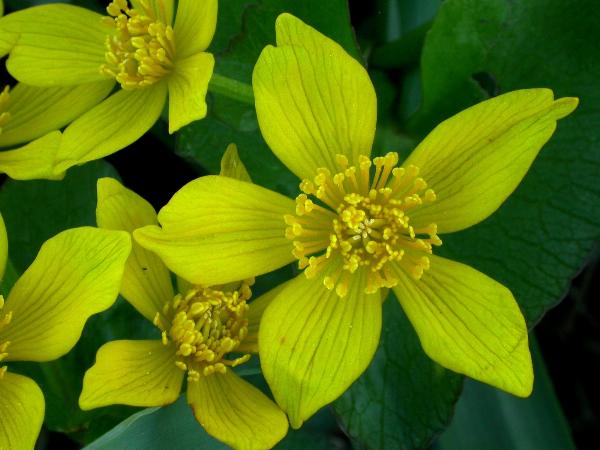


First of all, if anyone asks what you are
doing when you are on the land where this cache is located, tell
them that Mr. Stiles (the land owner) gave you the OK to walk
through his prairie. It's best to walk to the cache by following
the fence along the west side. That's the driest route. Now to find
this well done, i.e. cooked (explanation follows), ammo box you’ll
need to locate six of a certain constellation’s stars in
this field of stars. You’ll also have
to name the constellation that the stars outline in the sky. Once
you have come up with a couple final numbers, you will plug them
into specific areas in a URL that will, when completed, direct you
to a picture with instructions about where to look for the cache in
a prairie. Even so, the cache is still in the distance in the
pictures provided. One of the images was taken at night showing a
red laser beam emanating from where the cache is. Another I provide
shows a daylight telephoto view from the same location as the night
shot. A third image was taken from a second direction showing the
sun setting right behind the cache location, again in the distance.
You could try to cheat by looking for the cache from the
coords listed on this webpage. That however could require A LOT of
walking in a heavily overgrown area. Good luck with that
one.
I was going to call this cache “Star Dust”
but changed the name after it got accidentally cooked in a prairie
fire. See the box in the upper left picture above. It’s in a
prairie that a friend of mine owns. After I placed it he agreed to
pick it up BEFORE Dr. Daryl Smith from UNI burned off the prairie.
He forgot…… I wasn’t tooooo upset and in fact wanted to see what
happened to the ammo box -and its contents- after it went through a
momentary yet very hot blaze. We found that the rubber seal was
intact and the paint was only a bit browned in spots. Most of the
contents were melted, but not burned. A golf ball had a flat spot
on it. The phosphorescent stars were a glob stuck to the inside
wall - I left those in the cache as an example of what happened,
please leave them stuck in place. All the baggies were mangled but
the log book was fine. The pen was bent.
This article
talks about Smith’s passion for maintaining prairies by burning
them. One week after the big event the land was looking green
again. See the middle picture along the top of this page. I see
that one animal liked his meal well done. Note the picture on the
upper right.
The box is attached to a 100+ year old
metal fence post. That should help in locating it. On the way in
you may get wet feet. The routes along either the west or east
fences offer the driest ways in. If you walk straight to the cache
you’ll have to cross
this.
As stated before, to find the cache you
will have to carefully peruse
this picture that I took of the sky. Notice that
in the blue area in the upper left I drew a line to six key stars.
They are six of the brightest stars in a constellation that you
will also have to identify. North is generally up in the picture. I
named an important star cluster to help identify the area in the
sky where this constellation is located. You’ll have to locate each
key star in the sky picture then draw a line straight up
from the center of that star to the ruler above. Once at the ruler
read off and record the mm value at that point.
[What I did to accomplish this is I
pasted the star field image into Paint and drew thin lines
using the line function. I didn’t need to print the image.
While in Paint I copied each small part of the star field
surrounded by blue and drug them across the rest of the sky
until I found a match.] Now to
finish the task: sum your mm values and, and add it to the
letters in the constellation’s name – converted to numbers
using a phone pad. To ensure better accuracy I’ve
included the last digit of each stellar measurement, like the
4 part of 124 mm. Each number I provide should end the mm
measurement you come up with for each of the stars in a
left to right order. The helper digits are 2, 8, 3, 9, 0
and 2. Once you sum your mm values you will want to subtract
726 from it. The result should be a 3-digit number
that you will need to exchange for the three pound signs (#)
at the end of the link below. Once the URL is corrected,
paste it into an Internet address bar and use it to find the
images that should lead you to the cache. Good
luck!
The URL = http://www.geocaching.com/seek/log.aspx?IID=c5fe3ab6-5182-400d-8fd5
eeb25ec1d0fe&LID=15100###
The flower to the right here is a marsh
marigold. They grow in the wettest part of this prairie. I took
this 2 second exposure at sunset. I used aperture priority
on my Nikon Coolpix digital camera and set it to the smallest
aperture (highest f-ratio) to get the maximum depth of field.
Because that extends the exposure time I used a tripod. To get
close to the ground my tripod allows me to invert the center post
putting the camera below the pod and upside down. That kind of a
tripod is the only way to go! 